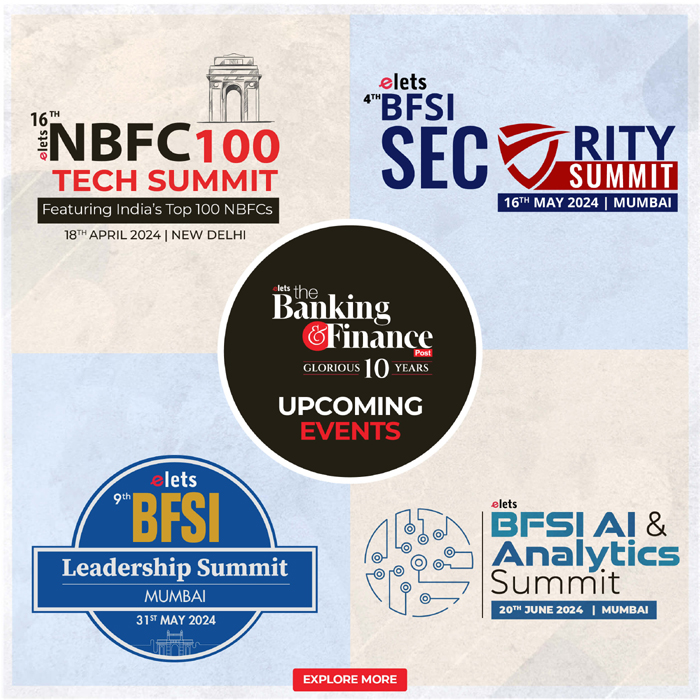The financial services sector has always focused on the use of Data and Technology as their differentiated strategy. Even as a lot has changed in terms of the acquisition, buying risk, consumer behaviour and product requirements due to the current crisis, the Financial sector has worked diligently to adopt new technology, various digital tools for new ways of customer acquisition, and various types of data for better understanding of customers. In the current competitive environment, organisations invest in technology to collect relevant data from multiple sources and process them using AI/ML to get better insights about their consumers.
Alternate data has had many definitions over the years. However, to put it simply, any data readily available in the digitised form but not related to conventional repayment history is called alternate data. There are various sources of collecting this information using technology and digital platforms. Alternate data has evolved over many years to being currently used across the lending ecosystem. This data provides a better understanding of consumers, their needs, behaviour, and their financial discipline, which becomes key to forecasting customer performance on the lending proposition. Alternate data not only mitigates risks for financial institutions but also helps consumers become eligible for more credit based on deep analysis and understanding of their payment history on alternative accounts that traditionally would not have been considered.
Also Read: Location Intelligence Applications-Every Financial Firm Should Deploy
One of the significant challenges towards adopting alternate data is that it comes from various sources and is found in different structures. To address this challenge, an organisation must build a robust ecosystem within which to use such data. The key steps to set up a qualified ecosystem are:
- A compliant source of information
- Depth and breadth of data sources
- Consistency of information and data points usage
- Predictive model fit
- Data accuracy
Before using this data, an organisation must curate the data and put it in a structured format. The use of advanced analytics can indicate a pattern to be used for better insights on customers. These insights can be used for various purposes during the consumer life cycle. The structured data such as mobile phone, utility bill, rental information, etc., are sources of alternate data that provide deep and reliable insights into the customer spending pattern, financial discipline, and payment behaviour. Simultaneously, there are various unstructured data sources such as social media, e-mail, internet usage etc., which cannot be taken at face value. With the use of AI/ML, a pattern can be established between the two, reflecting on overall customer behaviour and lifestyle.
Benefits of alternate data for financial institutions
Strengthening the customer underwriting process: Augmenting traditional data with alternate data strengthens customer decisioning and improves the efficacy of credit decision, leading to better revenue growth and risk control.
Competitive advantage to the peer lender: An in-depth understanding of customers helps build a product that is in line with customer needs. This gives a competitive advantage to lenders over their peers. Deep underwriting, better customer insights, and offering the right product have always been the differentiators for financial institutions, and alternate data facilitates all of these.
Preventing fraud: Usage of social media footprint and other structured data sources provides insights into potentially fraudulent customers or activities. This information can be used for appropriate customer filtering when underwriting to decrease instances of fraud.
Identifying new customer segments and acquiring customers in them: One of the key advantages of alternate data is identifying a new segment where customers do not have any credit footprint and use this information to determine the creditworthiness in those segments.
Use of alternate data in a pandemic
As explained above, alternate data gives a deeper insight into customers and transforms uncertainty into a better understanding of risks for appropriate risk buying. The recent crisis has impacted many customers adversely, and in many cases, the ability to pay has been negatively affected due to loss of a job or reduced income. When used as an alternate data source, the employment data can provide insights on the employability of customers to make an informed decision on their repayment capabilities.
Also Read: Why secure SD-WAN is significant for Financial Services?
Alternate data can be used across customer life cycle by financial institutions. Many of these data sources can access an unparalleled set of insights enabling faster decisions. While most organisations are using these insights for underwriting a customer, these sources are valuable across the lifecycle of a loan, beginning from onboarding-underwriting-collection-customer management. Getting customer insights and providing adequate information at every step is a must when most analytics models are re-worked to get the correct pattern.
Alternate data through digital platform helps an organisation to attract the right customers through the proper channels. It also gives an efficient, automated customer underwriting, and it facilitates around-the-clock customer decisioning. All of this translates to an excellent customer experience and an efficient way of managing the customer portfolio. So, once customers are onboarded and during their loan tenure, there are opportunities for the lender to use these alternative data sources for any change in customer lifestyle, borrowings in the market, and the spending pattern. This will create better opportunities for up-sell, cross-sell, and keep track of the customer’s affordability for repayment.
As financial institutions go through these uncertain times and get impacted adversely, they need to work more diligently to come out of this situation. The adoption of technologies, use of alternate data, and digitisation have become critical to thrive today and manage any such situation in the future.
Views expressed in this article are the personal opinion of Pratyush Chandramadhur, Chief Business Officer, AuthBridge Research Services.
Elets The Banking and Finance Post Magazine has carved out a niche for itself in the crowded market with exclusive & unique content. Get in-depth insights on trend-setting innovations & transformation in the BFSI sector. Best offers for Print + Digital issues! Subscribe here➔ www.eletsonline.com/subscription/




















